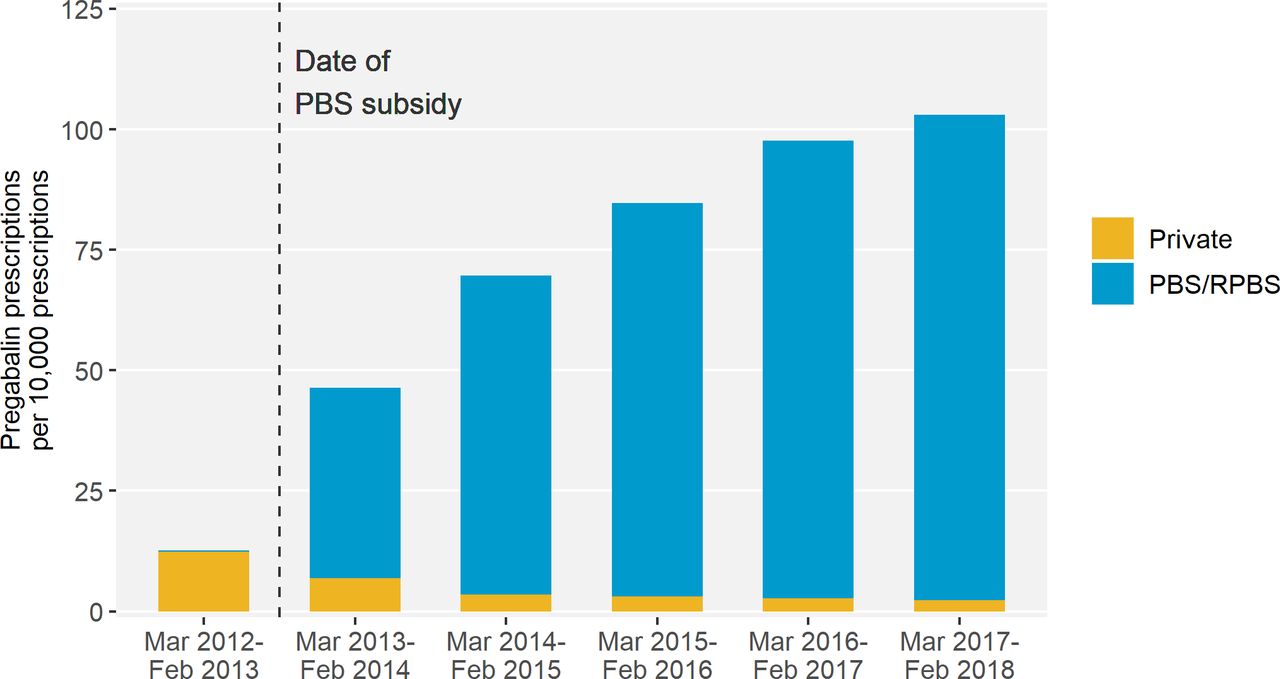On 1 September the third and final 60-day dispensing tranche commenced, meaning patients can now access double the supply of almost 300 medicines for chronic conditions.
This includes more than 70 asthma inhalers that have been listed on the Pharmaceutical Benefits Scheme (PBS) with an option of a 60-day prescription – coinciding with the start of National Asthma Week (1–7 September) – including all asthma preventer inhalers.
Overall, the initiative is beneficial for patients living with asthma, said Associate Professor Debbie Rigby FPS, Clinical Executive Lead at the National Asthma Council Australia (NAC) and head of PSA’s Respiratory Care Community of Special Interest.

‘We know that adherence to preventers is poor, and therefore asthma control can be poor, [with] cost being a barrier to people getting their preventers dispensed and using them as prescribed,’ she said.
‘So [60-day dispensing] will have a positive impact on people being able to afford their preventers, and that can, in turn, lead to better adherence and better asthma control.’
But while A/Prof Rigby said 60-day dispensing could work ‘very well’ for patients who have good asthma control and are stable, the NAC has expressed some concerns around patients receiving double supply of their inhalers.
‘Having a 12-month supply of medication removes the need to go back to the GP for a script at 6 months which means the patient misses out on a key opportunity for their GP to assess their asthma management,’ she said.
Australian Pharmacist explores these risks and what pharmacists can do to help mitigate them.
Medicine degradation can affect efficacy
When patients are dispensed double the supply of inhalers, it’s important to raise awareness that some have a shorter in-use shelf life than others.
‘Some inhalers come contained in a foil pack, usually with a desiccant or drying agent in them,’ said A/Prof Rigby.
‘They therefore have anywhere from 1–3 months in-use shelf life, which is different to the expiry date on the outer product [and] must be used within a specified timeframe to avoid reduced stability.’
This includes some dry powder inhalers, such as:
- Ellipta
- Genuair
- Easyhaler.
These formulations are particularly susceptible to high humidity.
‘Adsorption of moisture can significantly increase powder cohesiveness, leading to decreased dispersal and generation of fine particles during inhalation, which may lead to reduced efficacy and increased adverse effects due to increased oropharyngeal deposition,’ she said.
Pharmacists should be aware of the potential for patients to open more than one inhaler device at the same time, thus exposing the inhaler to the same in-use shelf life, said A/Prof Rigby.
‘Particularly for inhalers that have a 1-month in-use shelf life, such as most Ellipta inhalers and some of the strengths of Easyhaler, [patients] may be then either wasting them, or people will continue to use them after that 1-month in-use shelf life and potentially have reduced efficacy because of the absorption of moisture into the dry powder inhaler,’ she said.
‘In addition, some inhalers must be stored in a refrigerator prior to dispensing, however they can be stored at room temperature after dispensing and in-use for a maximum of 2 months.
‘If a patient opens both inhaler devices at the same time, they still need to be used within the 2 months and there is a risk that poor adherence may extend the in-use period.’
Pharmacists should therefore raise awareness among patients of in-use expiry and advise them to only have one inhaler in use at any one time, said A/Prof Rigby.
‘[Otherwise] it could have reduced efficacy, because the powder could become clumpy, moisture ridden, and therefore not work effectively.’
Patients may be on the wrong medicine strength
The Australian Asthma Handbook recommends that if an adult or adolescent’s asthma has been stable and they have had no symptoms for 2–3 months, they could be stepped down to a lower-dose treatment, said A/Prof Rigby.
‘Adults and adolescents could even step down to [an] anti-inflammatory reliever therapy, with inhaled corticosteroid (ICS)/formoterol as needed,’ she added.
Children in particular should be on the lowest dose possible that provides good asthma control.
‘That means stepping down is an important part of the treatment algorithm, and hence why regular assessment by GPs is important,’ A/Prof Rigby said.
For people who are on a high-dose ICS, the benefits of a high compared to medium dose are minimal, she said.
‘[But] there is the potential for greater systemic absorption and hence other adverse effects,’ said A/Prof Rigby.
‘If the patient needs their inhaler strength changed and they already have the extra supply of the previous medication, it could [also] lead to unnecessary wastage and cost to the health system.’
The role of pharmacists
It’s important that pharmacists not only check patients’ inhaler technique but also assess their asthma control.
Ideally, patients should only use two SABA [short-acting beta agonist] canisters within a year if they have good asthma control, said A/Prof Rigby.
She advises pharmacists to engage in a conversation with the patient to determine:
- how many times they are using their reliever inhaler per week or month
- how many SABA canisters in a year they are purchasing/using
- if their asthma symptoms wake them up at night
- if their symptoms are preventing them from going to work or school, or engaging in exercise.
‘Those conversational [cues] can give you a good indication of how well a person’s asthma is controlled,’ she added.
There is an overreliance on SABAs in Australia, partly because consumers can buy them over the counter without a prescription, said A/Prof Rigby
‘Many people will normalise [their SABA use] and say, “I only get one canister a month”, but that’s 12 a year – which has been shown to increase the risk of hospitalisation and exacerbations,’ she said.
‘So it’s really important to identify that over-reliance on relievers and to encourage patients, when they are prescribed a preventer to use it regularly.’
Should an adult or adolescent patient identify that they have good asthma control this may warrant a review of their medicines.
‘If they’re on a medium to high dose of ICS, pharmacists can recommend that they go back to see their GP to have an assessment to see if they can reduce the dose,’ she said.




 Source – Pregabalin prescribing patterns in Australian general practice, 2012–2018: a cross-sectional study[/caption]
Source – Pregabalin prescribing patterns in Australian general practice, 2012–2018: a cross-sectional study[/caption]

 National Medicines Symposium 2024 speakers (L to R): Steve Waller, Professor Jennifer Martin, Professor Libby Roughead, Tegan Taylor[/caption]
National Medicines Symposium 2024 speakers (L to R): Steve Waller, Professor Jennifer Martin, Professor Libby Roughead, Tegan Taylor[/caption]


 This CPD activity is sponsored by Reckitt. All content is the true, accurate and independent opinion of the speakers and the views expressed are entirely their own.[/caption]
This CPD activity is sponsored by Reckitt. All content is the true, accurate and independent opinion of the speakers and the views expressed are entirely their own.[/caption]





